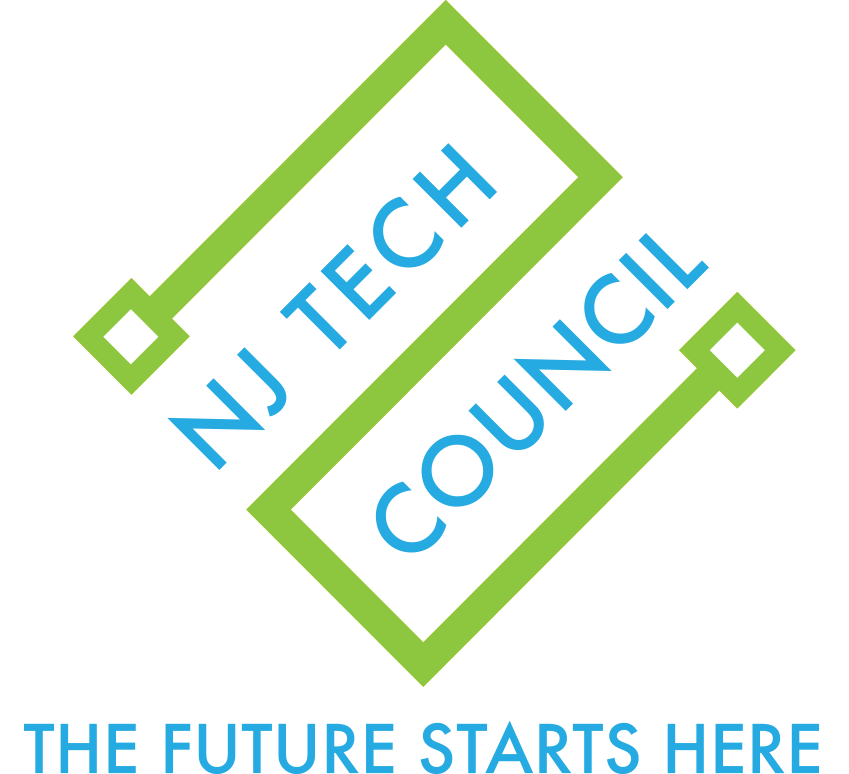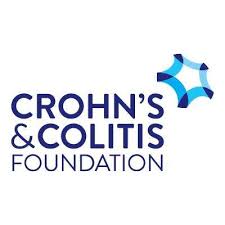This recent shift in hiring has happened in two waves, both of which are ongoing. The first, a structural reset, began in 2017, at the outset of the 2017–2019 bull market for workers. The second, a cyclical reset, began in 2020, prompted in part by the Covid-19 pandemic. Let’s consider each in turn.
Follow the link to read the complete article:
https://hbr.org/2022/02/skills-based-hiring-is-on-the-rise
HIRING BONUSES MAY CONVINCE UNEMPLOYED TO GET BACK TO WORK: US CHAMBER OF COMMERCE
June 30, 2021
Hiring bonuses appear to be an effective way to get more of the unemployed back to work, according to a survey by the US Chamber of Commerce released on Tuesday. It found that 39% of unemployed Americans who lost their jobs during the pandemic and are not actively looking for work say that a $1,000 hiring bonus would increase their urgency to return to full-time employment. It was the most appealing solution for hesitant-to-return workers.
Disney is one of the companies offering $1,000 sign-on bonuses to some workers at its parks. https://www.businessinsider.com/disney-struggles-find-workers-offering-sign-on-bonuses-labour-market-2021-6
The poll included 506 Americans who lost their jobs during the pandemic and have not returned to full-time employment. It was conducted from May 17 to May 20.
Other incentives included work-from-home flexibility, picked by 32%, and worker vaccination requirements, picked by 23%.
The percentage who say hiring bonuses could attract them back to the job market was particularly high among unemployed workers age 25 to 34 (53%) and those with some college education but not a degree (49%).
The US Chamber of Commerce noted that 10 states have already announced return-to-work bonuses: Arizona, Colorado, Connecticut, Kentucky, Maine, Michigan, Montana, New Hampshire, Oklahoma and Virginia.
Separately, Indeed released data earlier this week that 4.1% of job postings in the week ended June 18 contained hiring incentives, up from 1.8% in the same week last year, Yahoo reported. “Job seekers are able to have a little wiggle room and be able to shop around a little bit more,” AnnElizabeth Konkel, an economist at Indeed Hiring Lab, told Yahoo Finance Live. “Employers are increasingly offering hiring incentives that can be anything from signing bonuses to retention bonuses to cash incentives.”

Cell and Gene Therapy (CGT) are highly specialized areas experiencing tremendous growth and opportunity in the biopharmaceutical industry. The war for talent in the CGT space, however is fierce and only going to escalate as more companies jump into this arena.
To put this into perspective, The Center for Biologics Evaluation and Research (CBER/FDA) has over 800 active gene therapy INDs in its pipeline for review. [1] MIT has predicted the number of new launches of cell and gene therapies is expected to reach between 40 and 60 launches (Figure 1), with 15-30 launching within the next five years. [2] The Alliance for Regenerative Medicine Report 2018 states that there are >900 companies currently exploring cell and gene therapies. [3] McKinsey estimates that Cell and Gene Therapy market will have total market of up to ~$40B by 2024. [4]
This explosive growth is putting tremendous pressure on CGT companies to find the right talent to advance their pipelines of these new therapies towards approval and commercial supply.

Figure 1: MIT NEWDIGS Research Brief 2018 Launches
Where is the Talent War?
The war for talent is mostly affecting the CGT space in three (3) major areas: process development, manufacturing and senior management. We review these areas below.
Process Development
Currently, the processes for making viruses in the pre-clinical stage are limited in terms of scalability. [5] New and improved processes are needed to provide efficient translation of early stage therapies into commercial-scale manufacturing.
For CGT companies to meet the rising demands, it is imperative to have experienced process development scientists in place to translate research-based processes into scalable processes for clinical and commercial manufacturing. [6] However, the roles are many and the experienced scientists are few.
Due to the talent shortage, the search for qualified candidates can be long and arduous. CGT companies are finding it extremely difficult to hire qualified and experienced professionals in process development across various levels. These include upstream and downstream scientists, cell line development specialists and senior engineers.
Manufacturing
At present, producing the essential components required for CGT, like viral vectors for gene therapy, is an extremely complex and expensive process. Currently these viruses need to be specially made in specialized facilities, drastically different than the traditional small molecule production facilities. [7]
GE Healthcare Biopharma [Fig.2] outlines key factors and capabilities needed to de-risk and successfully manufacture and provide to a greater number of patients over time. [8]. These evolve from the current highly-manual processes, to orchestrated supply chains, to global manufacturing and distribution systems. CGT companies are racing to find and on-board experts from a very limited talent pool with the experience to establish these yet-to-be developed functions and capabilities.

Figure 2: GE Healthcare Biopharma
Winning platforms, however, have yet to be chosen as testing and optimization continues. For cell therapies to be commercialized, efficient manufacturing infrastructure will need to be put in place. New technologies and next-generation techniques will help to create automated, closed systems that ensure both sterility and scalability in manufacturing of these cell therapies. Until these can be developed, tested and reliable, multiple manual methods will need to be used to produce different viral vectors and cell therapies. [9]
Both this lack of chosen platforms and the small number of experienced experts in manufacturing are serious challenges for the industry. As a result, many companies do not have the facilities, nor extensive expertise required to produce these viruses on a commercial scale. [6]
Senior-Level Management
Again, because the industry is young, there is a lack of seasoned managers with real, hands-on experience from end-to-end to step into fill these important strategic and tactical positions.
In order for CGT companies to attract the right candidate(s), they must be willing to pull out all the stops when offering compensation packages to secure these in-demand professionals. Some annual salaries have been shown to be approaching $300k and above
The Benefit of Using a Specialist Recruitment Agency
When working with Regional Personnel, clients benefit from our inside knowledge of pharmaceuticals, because we come from pharmaceuticals. We bring our deep technical expertise and pharmaceutical networks, developed over 30+ years, to every partner search.
Start a conversation with us: [email protected].
[1] Peter Marks MD, PhD; FDA CBER Presentation, BioNJ’s Manufacturing Briefing (Sept. 2019) [2] MIT NEWDIGS Research Brief 2018F210-v027-Launches [3] Alliance for Regenerative Medicine, State of the Industry, 2018, https://alliancerm.org/press-release/the-alliance-for-regenerative-medicine-releases-q1-2018-data-report-highlighting-sector-trends-and-metrics/ [4] McKinsey & Co. Presentation, BioNJ’s Manufacturing Briefing (Sept. 2019) [5] [6] Sargent, Brandy et al. “Key Considerations for Gene Therapy Commercialization.” Cell Culture Disk. 12 Sept. 2018, https://cellculturedish.com/key-considerations-for-gene-therapy-commercialization/ [7] “Demand Exceeds Supply in Cell & Gene Therapy Workforce.” Absorption Systems. 16 Sept. 2019, https://www.absorption.com/kc/demand-exceeds-supply-in-cell-gene-therapy-workforce/ [8] GE Healthcare Biopharma Presentation, BioNJ’s Manufacturing Briefing (Sept. 2019) [9] Hsu, Felix. “Driving Growth of the Cell and Gene Therapy Sector.” Pharma’s Almanac. 12 Mar. 2019, https://www.pharmasalmanac.com/articles/driving-growth-of-the-cell-and-gene-therapy-sector
James F. Lynch PhD, MBA – Regional Personnel Services ©2019

Despite the amount of investment money that’s pouring into cell and gene therapy startups these days, there is a real shortage of experienced professionals when trying to fill many senior-level positions, like chief technical officer (CTO) and vice president of manufacturing. [1]
After the first known patient of an experimental gene therapy trial died in 1999, investment and research in gene therapy slowed for about ten years and mid-level professionals were, in effect, prevented from advancing in the field and gaining any further experience.
Gene therapy has recently rebounded, however, to once again be a thriving area in research and investment. In fact, the news organization BioCentury reports that in 2017 alone, gene and cell therapy companies were able to raise $4.5 billion in investment dollars. [2]
This surge is exacerbating the talent war as new companies and senior-level job openings are popping up at an escalated rate. Senior-level professionals in cell and gene therapy can expect to pull in annual salaries anywhere in the range of $260,000 – $400,000+. [3] In addition, there can be a significant amount of equity options and performance bonuses being offered to off-set the risk in order woo these supply professionals.
What to Expect When Recruiting
With so few experienced professionals out there, finding the right talent to fill high-level positions in cell and gene therapy will require companies to be patient. The candidate experience will be a key and essential component to attracting top talent away from their current employment. This can result in rather long searches versus the mere weeks that were needed for recruitment a few years ago.
And while searches for permanent hires are underway, cell and gene therapy companies will likely need to rely on many important actors, such as outside consultants, advisors and other employees during this time.
Why Choose Regional Personnel
Our CEO, James F. Lynch, PhD, MBA, brings over 25 years of pharmaceutical experience to the Regional Personnel. “At Regional Personnel, we know pharmaceuticals because we came from pharmaceuticals. Our clients benefit from our inside knowledge of pharmaceuticals. We bring this deep knowledge to every recruiting partnership,” said Dr. Lynch.
Start a conversation by emailing us at [email protected].
[1] [2] [3] Robbins, Rebecca. “Stock, Sky-High Salaries and a $10,000 Watch: Startups Desperately Compete for Top Experts in Gene and Cell Therapy” STAT. 31 Jul. 2018, https://www.statnews.com/2018/07/31/cell-gene-therapy-expert-shortage/
James F. Lynch PhD, MBA – Regional Personnel Services ©2019

Researchers and social scientists study generations and their behaviors. More specifically, they attempt to uncover what trends shape each generation as well as determine unique characteristics, expectations and preferences.
Here, in the United States, there are five distinct generations that have an active role in the workplace, including generational cohorts bearing labels of Boomers, Generation X, Millennials and Generation Z. However, given the amount of market research placed on Boomers and Millennials, it’s no wonder why Generation X seems to be overlooked in the conversation.
This notion of being “forgettable” has crossover in the workplace. In fact, new data published by DDI suggests that Gen X leaders have been the slowest to advance on a professional basis, and are being overlooked for promotions at higher rates than their counterparts in other generational groups [1].
Who is Generation X?
Generation X includes anyone born between 1965 to 1981. With an average of twenty years of experience in the workplace, they are currently in the best earning years in their employment cycle. Stuck in between two much larger-sized generational groups, Boomers and Millennials, Generation X shares many important characteristics with both its senior and junior counterparts. [2]
For example, Generation X is similar to Boomers in that both generations are employer-loyal, virtual team leaders, execution-focused and adept in identifying and developing talent in the workplace. [3] In addition, Generation X is comparable to Millennials because both are digitally-savvy, eager to lead and are driven by purpose. [4] Coupled with high effectiveness in demonstrating and leading with empathy, Generation X is typically poised to lead in the workplace.
Generation X Leaders are Being Overlooked
On average, research shows Generation X leaders had 1.2 promotions in the past 5 years. This is notably lower than both their senior counterparts, averaging 1.4 promotions, and their junior counterparts, who average 1.6 promotions, during the same time period. [5]
Moreover, Gen X leaders are expected to handle extensive workloads, by comparison, despite this lack of recognition in leadership roles. For example, Gen X have 7 direct reports on average, compared to only 5 direct reports for Millennials. [6]
How to Retain Generation X Leaders
Employers will likely find themselves battling retention problems if Generation X leaders continue to be overlooked for opportunities of advancement. Retaining Gen X will require a personalized approach that specifically addresses their needs for professional development.
Given their affinity for external mentoring and development, employers should invest in programs and opportunities that allow Gen X to find mentors. Also, employers should make a conscious effort to buck the trend of assuming Millennials are best qualified for tech-based leadership roles because of their age. Gen X is equally digitally-savvy and will thrive when placed in roles requiring innovation and teamwork. Lastly, employers shouldn’t shy away from incorporating tech-enabled tools when investing in Gen X’s development.
Regional Personnel specializes in recruiting and staffing services for the pharmaceutical industry. Regional helps its clients hire confidently. Need top talent? Email me at [email protected].
[1] Neal, Stephanie. “Are Companies About to Have a Gen X Retention Problem?.” Harvard Business Review. 26 Jul. 2019, https://hbr.org/2019/07/are-companies-about-to-have-a-gen-x-retention-problem [2] [3] [4] “The Hidden Potential of Generation X.” Development Dimensions International, Inc. 2018, https://www.ddiworld.com/genxreport [5] [6] [7] Neal, Stephanie & Wellins, Richard. “Generation X – Not Millennials – is Changing the Nature of Work.” CNBC Make It. 11 Apr. 2018, https://www.cnbc.com/2018/04/11/generation-x–not-millennials–is-changing-the-nature-of-work.html
James F. Lynch PhD, MBA – Regional Personnel Services ©2019

Making up approximately 25.9% of the U.S. population, Gen Z is entering the workforce with its unique skills and expectations. They are technologically savvy, creative and can constructively multitask. This next generation also values work differently than previous generations, so pharmaceutical companies need to rethink hiring practices and work environment. Understanding what Gen Z wants in the workplace is, in fact, the first step to successfully recruit and retain Gen Z.
What Gen Z Wants in the Workplace
Optimistic about the future, Gen Z is willing to work hard for the right pharmaceutical company. However, Gen Z’s perception of what a “good employer” is differs from that of their Millennial counterparts. So, while pharmaceutical companies may still be focused on offering employment perks that are favorable to Millennials, Gen Z’s needs and requirements in the workplace may be overlooked. Be sure to consider the following:
- Job Stability is Very Important
According to some studies, Gen Z is mostly interested in job stability and finding “future-proof” jobs. [1] Therefore, unlike job-hopping Millennials, Gen Z candidates are likely to be loyal and open to career advancement within your organization, should it be the right fit. - Job Growth & Business Challenges
Equipped with an entrepreneurial spirit, Gen Z is looking to make an impact on the world. Coupled with their innate ability to multi-task, they require constant challenges in the workplace. So, be sure to keep Gen Z stimulated in the workplace and offer them positions that allow them to grow in leadership roles. Primarily, Gen Z is drawn to jobs where they can establish their independent voice. - Evolved Learning and Development
Gen Z views problem-solving and knowledge-sharing much differently than previous generations. They prefer a self-directed and independent approach to learning. [2] Due to this evolved approach to learning, pharmaceutical companies may want to consider microlearning. Microlearning meets the preferences of Gen Z by providing training in small learning units and short-term learning activities. [3] - Opportunities for Work-Life Balance
Gen Z is comprised of diligent, committed workers that are prepared to work long hours for the right pharmaceutical company. However, by seeing firsthand the effects of being overworked and burning out, Gen Z demands a workplace that maximizes work-life balance. Gen Z candidates are looking for jobs that offer flexible schedules, telecommuting and other opportunities for work-life balance. - Human Interaction in the Workplace
Despite being the first digitally native generation, Gen Z prefers human interaction in the workplace. Whether it’s working in small groups with co-workers on projects or forging close relationships with supervisors, Gen Z wants social systems with others at work. Ideally, Gen Z should be recruited for positions that credit teambuilding and intercommunication.
Start a Conversation
Recruiting Gen Z requires an understanding of Gen Z’s specific mindset and needs. Regional Personnel specializes in pharmaceutical recruiting. We match top talent to company culture with a personal and customized approach to every placement. Start a conversation by emailing us at [email protected].
[1] Stahl, Ashley. “Gen Z: What to Expect from the New Workforce.” Forbes. 26 Sep. 2018, https://www.forbes.com/sites/ashleystahl/2018/09/26/gen-z-what-to-expect-from-the-new-work-force/#5d6b1db563e0
[2] Jenkins, Ryan. “How Generation Z Will Transform the Future Workplace.” Inc. 15 Jan. 2019, https://www.inc.com/ryan-jenkins/the-2019-workplace-7-ways-generation-z-will-shape-it.html
[3] “Microlearning for Millennials and Generation Z” KnowledgeCity Learning Solutions. 3 Oct. 2018, https://www.knowledgecity.com/blog/microlearning-for-millennials-and-generation-z/
James F. Lynch PhD, MBA – Regional Personnel Services ©2019

Generations allow us to look at Americans both by their placement in the life cycle (e.g., young adults, middle-aged adults, retirees) and as groups who were born at a similar time and share similar views on life. Demographers and social scientists have assigned characteristics and identified generational groups as Boomers, Gen X, Millennials and, most recently, Gen Z.
Defined as anyone born between 1997 and the early 2010’s, Gen Z makes up approximately 25.9% of the U.S. population, the oldest of which are now graduating college and entering the workforce. With every new generation having a unique set of attitudes and work habits, what specific qualities does Gen Z bring to the workplace? What can employers expect of Gen Z?
Characteristics of Gen Z
A 2014 generational study found that Gen Z self-identifies as loyal, compassionate, thoughtful, open-minded, responsible and determined. [1] Gen Z’s expectations are largely shaped around themes of academic and career success, perhaps more so than any other generation. [2]
Gen Z is also the first generation to have had the Internet around for its entire lifetime. These young workers are comfortable with all forms of technology, whether texting on their devices as a standard form of communication or nimbly searching the Internet to find information. They are accustomed to interacting with their devices and apps via touch or voice technologies. [3]
They’re highly visual, have strong technical skills and can constructively multi-task. As a result, they rely on tech-based relationships and as a result have not fully developed the “soft” people skills necessary in today’s work environment. [4] Gen Z also sees blurred lines between work and home, possibly preferring flexible work hours and work from home options. [5]
How Does Gen Z Compare to Millennials?
To successfully recruit Gen Z and keep them satisfied, it’s important for employers to understand the differences between this new entrant into the workforce and aging Millennial counterparts.
Unlike Millennials who grew up during an economic boom, Gen Z grew up during the Great Recession. As a result, they tend to be more pragmatic, risk-averse and focused on saving money than Millennials. Studies have found that Gen Z wants financial security but is not interested in gaining it through self-employment. [6] This could mean that Gen Z is more willing to be loyal to a company than Millennials and work their way up in that company.
Impacts on Recruitment
Recruiting Gen Z requires a highly personalized approach that considers their mindset and needs. Gen Z is comprised of integrators who typically blend work and life. These new workers are digital natives with on-demand expectations. They are always connected and need continual stimulation.
Regional Personnel specializes in recruiting and staffing services in New Jersey. We match top talent to company culture with a personal and customized approach to every placement. Start a conversation by emailing me at [email protected].
[1] Seemiller, Corey. Generation Z Goes to College. Jossey-Bass. ISBN 978-1-119-14345-1. Retrieved from https://en.wikipedia.org/wiki/Generation_Z
[2] “Is Gen Z the Most Success-Oriented Generation?” Barna Group. 6 Jun. 2018, https://www.barna.com/research/is-gen-z-the-most-success-oriented-generation/
[3] [4] [5] He, Emily. “Gearing Up for Gen-Z: What Employers Should Know About Today’s Young Workers.” Forbes. 25 Feb. 2019, https://www.forbes.com/sites/emilyhe/2019/02/25/gearing-up-for-gen-z-what-employers-should-know-about-todays-young-workers/
[6] Lucas, Suzanne. “Gen-Z is Coming to the Workforce. Here’s What to Expect.” Inc. 8 Sep. 2018, https://www.inc.com/suzanne-lucas/gen-z-is-coming-to-workforce-here-is-what-to-expect.html
James F. Lynch PhD, MBA – Regional Personnel Services ©2019

Biopharma’s increasing investment in technological innovations like artificial intelligence (AI) and data science is an important trend to watch for emerging employment opportunities, especially in the drug discovery market.
The exploding practice of using AI to accelerate the drug discovery process is specifically illustrated by both the increasing number of partnerships between pharmaceutical companies and AI startups and the amount of investments pharmaceutical companies are making on internal AI capabilities.
More Partnerships with AI Startups
Pharmaceutical companies have collaborated with AI startups to enhance drug discovery programs in many important ways. As a result of these partnerships, for example, AI has been applied to patient diagnosis and treatment, drug repurposing and even to genomics to discover natural peptides with health benefits. [1] AI is also being leveraged in data mining to find and validate potential cancer drug targets as well as therapeutic targets for neurological diseases. Each are data-rich endeavors with potentially significant medical benefits.
Increasing Investment in Internal AI Capabilities
Because massive volumes of data are created when incorporating AI into drug discovery, pharmaceutical companies will need to restructure their organizations and infrastructures to be able to quickly process, store, access and analyze their research. As a result, pharmaceutical companies are equally growing their internal AI capabilities to be prepared for the AI-driven digital transformation and accelerate time to discovery. Global pharmaceutical companies including Merck, GlaxoSmithKline and Pfizer are in the process of undertaking this change.
Impact on Employment Opportunities
The technological advancements of AI in biopharma not only impacts how pharmaceutical companies operate but also creates a shift in employment opportunities. Although some experts predict that AI advancements will result in a reduction in the labor force over the next fifteen years, we believe the reduction will be accompanied by an expansion of workforce needs in various other areas.
Both organizations and workers alike will have to adapt to the need for more technological and higher cognitive skills created by the adoption of AI in biopharmaceuticals like drug discovery. For example, pharmaceutical companies will increasingly need data analysts and scientists, AI and machine learning (ML) specialists, big data analysts and more.
Is your organization ready to find and employ new skills needed in this AI revolution? Regional Personnel specializes in recruiting services for pharmaceutical, biotech and medical device industries. We match top talent to company culture with a personal and customized approach to every placement. Start a conversation by emailing us at [email protected].
[1] Smith, Simon. “31 Pharma Companies Using Artificial Intelligence in Drug Discovery.” BenchSci. 1 Apr. 2019, www.blog.benchsci.com/pharma-companies-using-artificial-intelligence-in-drug-discovery
James F. Lynch PhD, MBA – Regional Personnel Services ©2019

Are you looking to enter the life sciences job market? There isn’t a more opportune time to launch your career because the industry is booming. If you’re actively seeking an opportunity in life sciences within the United States, focus your search on these hotbed regions as highlighted by BioSpace for innovation, growth and jobs in the life sciences sector:
- Connecticut, New Jersey, New York, Pennsylvania and Rhode Island [Pharm Country]. There are 19,019 life science companies. There are 399,704 life science workers in this highlighted area. The average annual income is $91,214.
- Massachusetts [Genetown]. There are 3,109 life science companies in Massachusetts. There are 69,941 life science workers in this highlighted area. The average annual income is $145,731.
- San Francisco and Northern California [Biotech Bay]. There are 3,418 life science companies in California. There are 99,564 life science workers in this highlighted area. The average annual income is $116,300.
- Delaware, Maryland, Virginia and Washington D.C. [BioCapital]. There are 9,881 life science companies. There are 112,880 life science workers in this highlighted area. The average annual income is $107,193.
- Research Triangle Park and North Carolina [BioNC]. There are 6,227 life science companies. There are 95,231 life science workers in this highlighted area. The average annual income is $84,145.
- San Diego and Southern California [Biotech Beach]. There are 3,418 life sciences companies in California. There are 176,451 life science workers in this highlighted area. The average annual income is $98,162.
- Illinois, Indiana, Iowa, Michigan, Minnesota, Missouri, Nebraska, Ohio and Wisconsin [BioMidwest]. There are 29,865 life science companies. There are 470,228 life science workers in this highlighted area. The average annual income is $145,731.
- Indiana [BioIndiana]. There are 1,689 life science companies in Indiana. There are 56,000 life science workers in this highlighted area. The average annual income is $94,749.
- Idaho, Montana, Oregon and Washington [BioForest]. There are 7,805 life science companies. There are 81,392 life science workers in this highlighted area. The average annual income is $69,737.
James F. Lynch PhD, MBA – Regional Personnel Services ©2019
The impact at the FDA from the government shut, as well as the potential impact to the public, has been running relatively below the radar. Everyone relies on the FDA for safe medicines, food, and animal products. If the FDA is feeling the effects from shutdown, so could the public. In the wake of this lingering shutdown, FDA has been forced to begin to assess its options in order to focus resources on key consumer protection functions. The longer the government shutdown continues, the greater the potential harm to public health. Here are some points to consider:
Currently,
- FDA cannot accept any new drug, biologic, device, or generic applications that require payment of user fees until the shutdown ends.
- FDA cannot accept any new INDs for review (aside from emergency INDs).
- User fees and carryover funding could run out within weeks.
Potential far-reaching results:
- Delayed approvals of life-saving drugs.
- Delayed generic approvals, affecting costs.
- Lower workforce morale potentially causing a mass talent exodus from the agency.
- FDA’s ability to recruit and retain staff being severely impaired.
To read the complete article, please follow link: https://bit.ly/2VXLZVP
To read more about our Leadership, please follow link below.
James F. Lynch PhD, MBA – Regional Personnel Services ©2019








